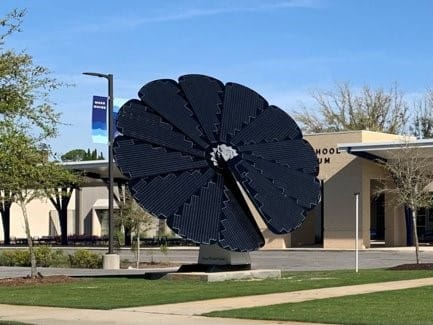Aging School Facilities Transformed into State-of-the-Art Campus
When Gulf Shores City Schools opened their doors in 2019, they were ready to make waves as the most innovative, state-of-the-art district in the southern Alabama region. They had their sights set on best-in-class facilities, from classrooms to athletics to campus-wide environment. However, the new district faced an age-old challenge as it inherited thirty-year-old facilities that needed significant repairs and upgrades. The cost of the district-wide modernization was more than their budget could afford.
The dilemma of deferred maintenance and aging facilities is one many districts across the country grapple, but Gulf Shores City Schools turned this fundamental challenge into a full facility transformation with creative funding and a long-term plan.
Using infrastructure to improve learning environments and budget stability
Through a capital recovery and reinvestment program in partnership with Schneider Electric, the district developed a comprehensive infrastructure initiative to generate energy and operational savings, upgrade building technology and systems, and address necessary repairs and replacements.
With their ultimate vision—boosting sustainability and efficiency while increasing student engagement and STEAM education opportunities—aligned with the necessary funding and plan, the district has begun their system-wide modernization project. This project will reduce the school system’s energy consumption by 33%, and helped it fund over $10.1 million in updates.
"Providing a safe, healthy and enjoyable indoor and outdoor learning environment for our students and teachers is among our top priorities," said Gulf Shores City Schools Superintendent, Dr. Matt Akin. "We're thrilled to partner with Schneider Electric to not only make much-needed upgrades to our buildings, but also to do it in an innovative way that boosts critically important STEAM learning while saving us money for future improvements."
After addressing core operational and comfort upgrades that spanned the HVAC system, water system, high school roof replacement, new centralized building automation system, interior and exterior LED lighting upgrades, solar skylights, and voice-over-IP (VOIP) communication system, the district focused on how to further enhance student engagement and learning experiences.
Boosting sustainable technology and STEAM learning opportunities
In addition to infrastructure modernization, the district found several opportunities within the project scope to tie in sustainable technology and student programming. The campus will feature interactive exhibits designed by the same firm behind the locker rooms and exhibits at major college campuses like the University of Alabama and Auburn University.
Sustainable technology displays include:

- Renewable energy generation, complete with interactive, touchscreen dashboards that show real-time data on energy produced, building temperatures, energy usage and more
- SmartFlower solar arrays that track the sun throughout the day
- Solar-powered trees that provide shade and boost aesthetics
- More solar-powered technology, including solar benches in playground, sporting areas and solar charging stations
- Teaching exhibits that feature stations such as the Earth's ecosystems and plant life cycles for expanded outdoor classroom opportunities
Students will enjoy these exhibits as a key component of their curriculum for years to come, moving both technology and energy education beyond the walls of classroom and making it a tangible experience.
Pairing innovative technology with innovative funding
Along with its operational savings from efficiency upgrades, the district was able to take advantage of recent federal stimulus funding to help pay for these improvements. Through passage of the American Rescue Plan, K-12 school districts nationwide are set to receive $123 billion in federal funding in response to the COVID-19 pandemic. Gulf Shores City Schools will use a portion of these dollars to improve indoor air quality within each school by installing new HVAC systems.
Federal aid can be the first step in a master plan that builds towards a modern, healthy and safe learning environment. To maximize short-term funding while creating long-term successes, many districts will use this mandate in combination with an Energy Savings Performance Contract (ESPC) to stretch their dollars further.
ESPCs allow school districts to not only address foundational infrastructure issues, such as wiping out deferred maintenance backlogs, but also reinvest savings to fund far-reaching goals, such as healthier buildings, sustainable athletic fields or upgraded STEAM labs. An ESPC partnership team also includes financial experts to help find, apply, and implement other federal- and state-level grant opportunities as they become available.